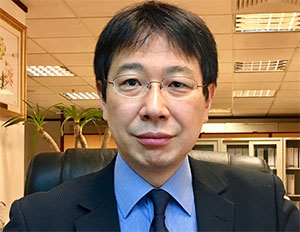Japan trends towards Vietnam
Update:
18/07/2023
View:
8408
Vietnam remains the most attractive investment destination for Japan’s manufacturing firms in the medium-term prospects, according to the Japan Bank for International Cooperation (JBIC). Deputy director general of the Policy and Strategy Office for Financial Operations Noriyasu Yuge tells VIR’s Phuong Thu about the ongoing investment trend.

Your report on the overseas operations of Japanese manufacturing companies said that in the next three years, Vietnam will remain an attractive destination for foreign investment. The report predicts that interest in Vietnam is set to rise again while Thai interest continues to drop. What are the main reasons?
We conduct a survey every year on the overseas business operations of Japanese manufacturers to research their current trends, agenda, and future outlook. Our 28th survey for the year 2016 was conducted by sending questionnaires to 1,012 companies, and it showed overseas production and sales ratios continuing to rise, and that in the medium term, prospects for Vietnam ranked among the best in the world. One third of the respondents to name Vietnam to have promising prospect, up 5 points from the previous year, positioning fourth in the country rankings following India, China, and Indonesia.
Many Japanese enterprises are keen on the opportunities to capture overseas market and to disperse their production base overseas to optimise the global supply value chain. As for Vietnam, the biggest reasons for promising prospect is the future growth potential of the local market. As you know, in terms of GDP denominated in USD, Vietnam grew by more than three times during the past 10 years. Given recent dynamic growth, Japanese investors highly appreciate the future growth potential of the local market. This potential was cited by 74.7 per cent of survey respondents for positive prospect. Over the past 10 years, their top reason has shifted from inexpensive labour to the future growth potential of the market.
The current size of the local market ranked third with 19.5 per cent, while the remaining reasons included qualified human resources and the stable political situation.
You mention that “inexpensive labour” is no longer cited as the first reason for the country’s prospects being promising. Could you further elaborate?
Vietnam’s inexpensive labour used to be the top attraction for investors. But this aspect of the picture has lost its appeal over time. As economy grows, the comparative advantages of Vietnam changes and foreign investors will react accordingly. Policy makers also recognise that inexpensive labour is gradually exhausted, and try to shift its growth model to more sustainable one driven by productivity.
As the survey respondents have said, their production bases take on the role of training human resources and improving the production process. So they have high expectations for their labour.
What sectors are Japanese investors looking for in the year to come? And what are the biggest constraints to the Vietnamese business environment for investors?
By industry category, Vietnam ranks third in potential in the electrical equipment and electronics, and general machinery industries; fifth in the chemicals sector; and seventh in the automobile field.
Our top issue was that the “execution of the legal system is unclear”, while second place is held jointly by “difficulty in securing management-level staff” and an “underdeveloped infrastructure”. Despite recent impressive improvements, infrastructure is still lagging in comparison with other ASEAN countries, especially in transportation and power sector. Looking at the trends over the past 10 years, there have been some shifts, as rising labour costs and increased competition in the market have also been steadily increasing.
In Vietnam, Japanese investment formerly topped the charts. But in recent years, its investment inflow fell both in number of projects and registered capital while Korea and Singapore ranked at the top. What is your opinion about that?
Through three decades of active FDI to ASEAN, Japan firms have established solid production network in ASEAN countries, as you can see in the car industry of Thailand. Korean companies are relatively new investors and are now eagerly expanding their global supply chain. This difference may explain the current investors position of Korea, while our survey suggests that Vietnam’s share of Japanese FDI is still modest despite investors’ high expectations.
One important thing to remind you is that Japanese enterprises are actually engaged in constructive discussion with government to formulate infrastructure projects, such as power generation plant. Once these projects progress smoothly, Japan will win back top investors’ position.
Japan is supporting Vietnam in both growth and infrastructure. What role does the Japan Bank for International Cooperation (JBIC) play?
JBIC is a policy-based financial institution fully owned by the Japanese government, operating with missions to contribute to the sound development of Japan and the international economy and society. In Vietnam, we have supported Japanese FDI in infrastructure as well as manufacturing sector. Considering the intrinsic nature of infrastructure projects, good coordination between the host government and investors is indispensable to facilitate investment. We will work as a bridge between the government and Japanese investors.
Source: http://www.vir.com.vn